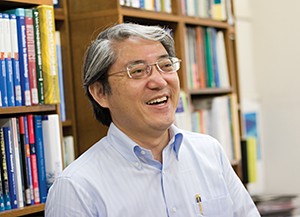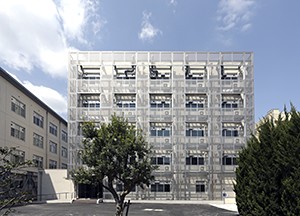Features
Features
FIRST and foremost
- ツイート
- 2010/07/29
Japan's FIRST program will thrust Nagoya University's top researchers in microfluidics to the forefront of cancer diagnostics
The Funding Program for World-Leading Innovative Research and Development on Science and Technology (FIRST) is a major new initiative by the Japanese government aimed at advancing cutting-edge research that will strengthen Japan's international competitiveness and produce applications that will benefit society. In March 2010, the Japan Society for the Promotion of Science -- the body responsible for administering the program -- announced the names of 30 research groups chosen to share the \100 billion (US$1.1 billion) fund, which can be used with a degree of flexibility not found in other funding programs in Japan.

Yoshinobu Baba, a professor of applied chemistry in the Graduate School of Engineering at Nagoya University, was one of the small number of researchers out of the 565 applications from leading research groups in Japan to be awarded a prestigious FIRST grant. He shares the grant with Tomoji Kawai, a professor at Osaka University's Institute of Scientific and Industrial Research. Their joint proposal, which was awarded \2.9 billion (US$32 million) over four years, will focus on the development of nanopore-based microfluidic devices for the accurate detection of single biomolecules or cells at extremely low concentrations. The approach is important because it holds the potential to enable the development of compact, speedy sequencing devices.
Protein channels to silicon nanopores
The concept of using nanopores for single-molecule detection dates back to the mid-1990s when it was discovered that single strands of DNA would pass through a protein channel one strand at a time. By integrating sensors into the protein membrane, DNA base sequences could be read in series simply by detecting changing electrical patterns in the protein channel. Getting data from protein channels, however, is not easy due to a lack of sufficient quality control in existing approaches.
"We can control the movement of DNA strands in silicon-based nanopores much more precisely, so they should be better," said Baba. "We just need to make the diameter of the nanopores close to that of DNA, which is less than two nanometers."
Just this year, Kawai and his team, using the latest semiconductor technology, succeeded in fabricating a microfluidic device with silicon-based nanopores of just four nanometers in diameter. Baba plans to combine Kawai's technology with his own to develop a system that is precise enough for diagnosing cancer and other diseases.
One of the research targets for Baba's work is the detection of circulating tumour cells (CTCs). "In every ten milliliters of blood, there are over 50 million white blood cells and 40 billion red blood cells, but there may be only ten CTCs. It is very hard to separate such small numbers of CTCs from the huge numbers of blood cells. After separation, we must also detect changes in DNA, in proteins and in RNA at the single-molecule level. The new technology must be able to do all these things."
Another research target is the single-molecule detection of DNA methylation -- an important change in the activation of genes known as 'epigenetics'. The latest sequencing technology can easily detect single nucleotide polymorphisms (SNPs), the end result of epigenetic changes, but not the underlying methylation. Baba believes that a microfluidic device that can detect DNA methylation may revolutionize the study of genetics.
An international effort
The new joint project between Nagoya University and Osaka University will involve some of the biggest players in the field, both internationally and domestically. The project team currently collaborates with other universities in Japan and top research institutions in the USA, Sweden and Holland.
In addition to researchers from academia, a number of leading Japanese electronics companies, such as Panasonic, Toray and Toshiba, will also be involved in the project. The Japan Microarray Consortium (JMAC), a group of 60 smaller companies that use biochips for medical applications, is another key member of the program that will expertise in clinical trial management to the project.
"We are developing a single-molecule cancer diagnosis system with Panasonic, a single-cell cancer diagnosis system with Toray, and a single-molecule infectious-disease diagnosis system with Toshiba," notes Baba. "One of the common problems in developing medical devices from basic research is that there is a large gap between basic research and medical applications. JMAC will function as a bridge to close this gap."

International collaboration is also crucial for clinical trials of these new devices. Japan's pool of patients at university hospitals is far smaller than the potential pool available at university hospitals in China, Europe and the United States. China Medical University, for example, has 8,000 beds, while the National Leon Hospital in France has 5,000 and John Hopkins University 3,000. In comparison, Fujita Health University Hospital, the largest university hospital in Japan, has only 1,500 beds. "Because of this, we plan to start collaborating with a number of hospitals in China sometime this year." There are also many small companies with experience in clinical trials. "For this reason, we have also asked JMAC to take part in experiments," says Baba.
FIRST things first
For now, however, Baba is focusing on building and equipping a research center for the joint project in a building between the university's Graduate School of Sciences and the research laboratory of Nagoya University Hospital. The center, due to be opened in March 2011, will be the first of its kind in Japan. "With better access to the university hospital, we will be able to design and fabricate devices directly for medical applications."
NU Research
(English)

